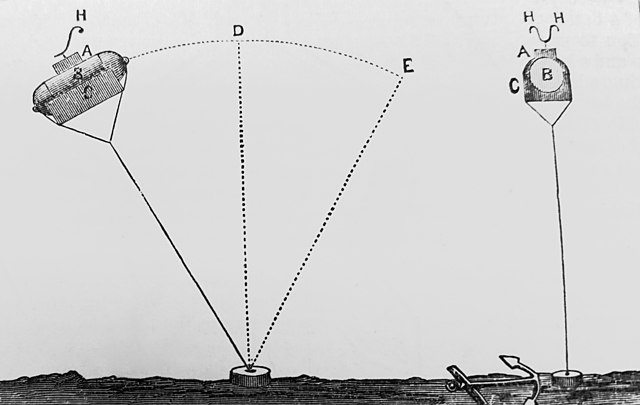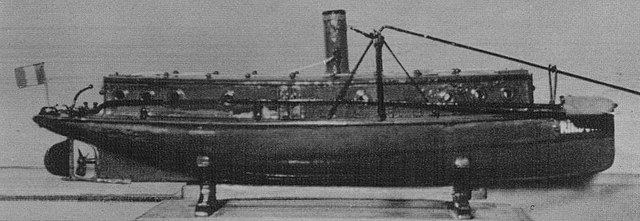The Short Admiralty Type 184, often called the Short 225 after the power rating of the engine first fitted, was a British two-seat reconnaissance, bombing and torpedo carrying folding-wing seaplane designed by Horace Short of Short Brothers. It was first flown in 1915 and remained in service until after the armistice in 1918. A Short 184 was the first aircraft to sink a ship using a torpedo, and another was the only British aircraft to take part in the Battle of Jutland.
Short Type 184
Cockpit section of fuselage.
Remains of a Short Type 184 at the Fleet Air Arm Museum. While Frederick Rutland's aeroplane survived the First World War intact, it was damaged by bombing during the Second World War.
A modern torpedo is an underwater ranged weapon launched above or below the water surface, self-propelled towards a target, and with an explosive warhead designed to detonate either on contact with or in proximity to the target. Historically, such a device was called an automotive, automobile, locomotive, or fish torpedo; colloquially a fish. The term torpedo originally applied to a variety of devices, most of which would today be called mines. From about 1900, torpedo has been used strictly to designate a self-propelled underwater explosive device.
Bliss–Leavitt Mark 8 torpedo
Fulton's torpedo
Confederates laying naval mines in Charleston Harbor
NMS Rândunica







